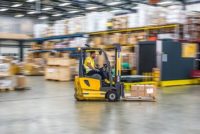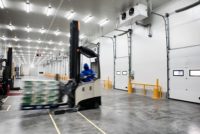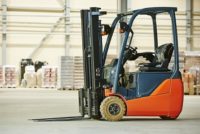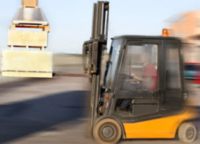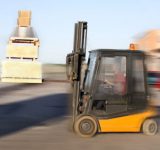Category: Forklifts
Few workplace machines are as useful as the forklift … or as dangerous. Some 100 workers are killed, and 20,000 injured, each year in forklift-related accidents. Here are the materials you need to legally train your employees in safe forklift operation, and to keep current with the latest developments in forklift and industrial truck safety.
Free Special Report: The 5 Deadly Forklift Dangers
Today we’re getting answers from EHS Hero® experts for two forklift-related questions. First, does OSHA require floor markings to clarify pedestrian walkways where lift traffic may be present? And second, does OSHA require annual forklift inspections? Read on to see what the experts had to say.
The Occupational Safety and Health Administration (OSHA) plans to issue a pair of proposals in the new year to update its forklift and walking-working surfaces rules, according to the Department of Labor’s new regulatory agenda. The department issued its first agenda since Eugene Scalia became Secretary of Labor.
It’s National Forklift Safety Day, sponsored by the Industrial Truck Association. Use this day to start, review, or update your forklift and pedestrian safety program.
For manufacturing plants, warehouses, and distribution centers, loading docks are the center of the action—the hub for receiving and unloading freight. Loading docks can be exterior or fully enclosed in a receiving bay, and they are typically located near a storage room or staging area. They can also be one of the more dangerous areas […]
OSHA is seeking comment and information about possible deregulatory action involving general industry, construction, and maritime standards for forklifts and other powered industrial trucks. The request for information appeared in the March 11 Federal Register.
Carbon monoxide (CO) in quantities that exceed OSHA’s permissible exposure limit (PEL) of 50 parts per million (ppm) as an 8-hour time-weighted average (29 CFR 1910.1000 Table Z-1) can occur in indoor work areas where fuel with a carbon content (e.g., natural gas, gasoline, kerosene, oil, propane, coal, wood, or plastic) is incompletely combusted. One […]
Motorized forklifts are an essential tool for unloading and loading trucks and otherwise moving heavy inventory. But forklifts—also called powered industrial trucks—can be highly hazardous for a wide range of reasons. National Forklift Safety Day, an observance sponsored by the Industrial Truck Association, took place this week.
Cal/OSHA fined a roofing and building supply company $62,320 for multiple serious accident-related safety violations following an investigation of a fatal forklift accident in San Francisco.
Recently, a subscriber asked the following question: Can we use a work platform connected to a fork truck to lift employees? If yes what are the regulations?
Recently, one of our subscribers asked the following question: For pedestrian safety, how wide does a designated protected employee travel path need to be? What type of stationary protective guards are acceptable to prevent forklifts from hitting pedestrians?

